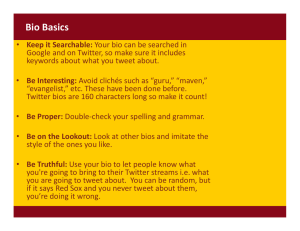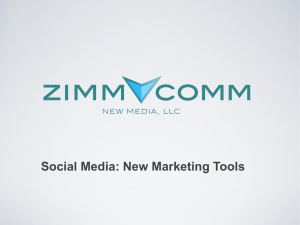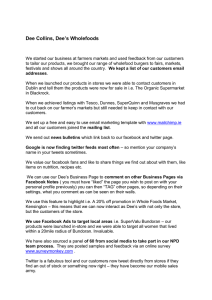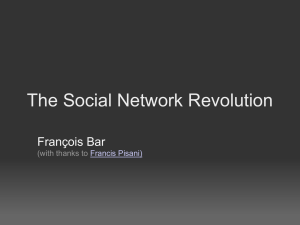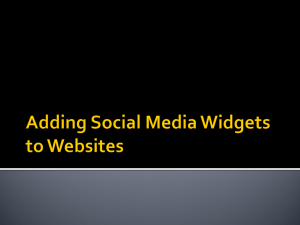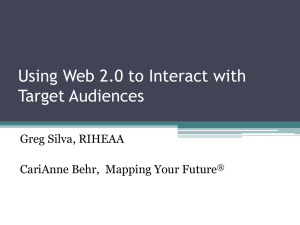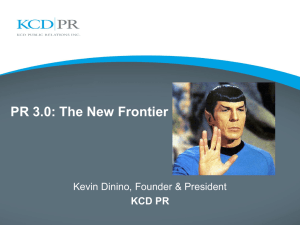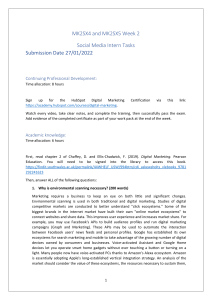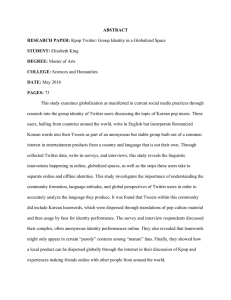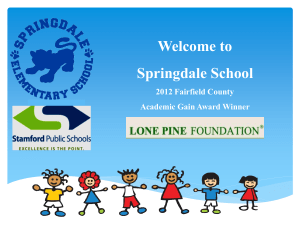"Like Us on Facebook": The impact of social networking - DE-DC-MD
advertisement
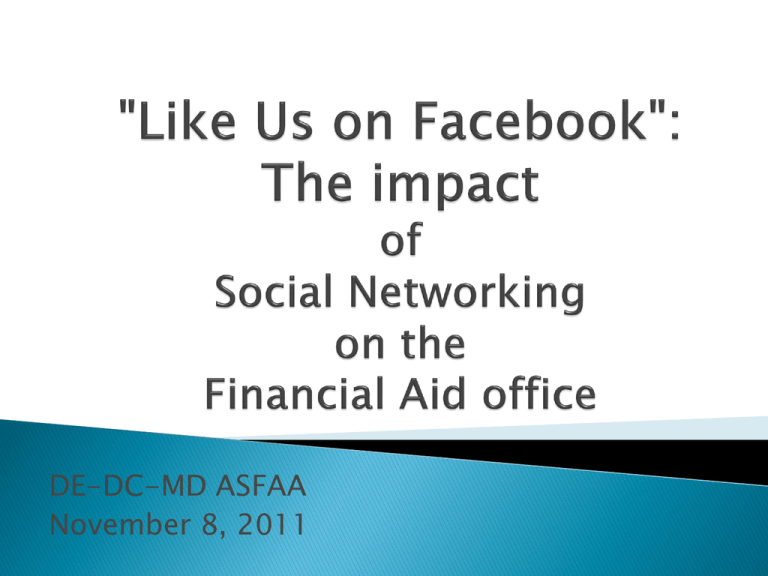
DE-DC-MD ASFAA November 8, 2011 Why use social networking? How to use social networking ◦ Introduction to Facebook and Twitter Watching for trends Proper sharing for financial aid professionals Make connections ◦ ◦ ◦ ◦ Students Schools and/or departments at your university Financial aid offices at other universities Financial aid groups (i.e. NASFAA) Be proactive to combat confusion ◦ Deadlines FAFSA Scholarships ◦ Timing What are the most confusing times of year? Post tweets that could help in advance ◦ Faster than updating a web site! Watch trends ◦ What are financial aid professionals discussing? ◦ What are common themes among posts from students? ◦ What information is coming from DOE? People “like” your page Your updates appear on their “news feed” Provide updates which can ◦ Vary in length ◦ Contain readily visible photos and link previews FACEBOOK People “follow” you Your tweets appear in their “timeline” Provide short, timely updates ◦ 140 characters or less ◦ Usually link to longer external content TWITTER Visit twitter.com Set up a new profile for your office Make it public ◦ If you make it private, no one will be able to see your tweets unless you allow them to follow you ◦ No sensitive info should be posted via Twitter, so a private profile should not be necessary Visit Facebook.com Create a profile for your office Use your profile to create a “Page” ◦ The profile is the “administrator” of the page ◦ Once the page is created, place a link to it on your office’s web site Topics ◦ A topic is “trending” if enough people tweet about it at the same time ◦ Search financial aid topics to see what groups are tweeting about Hashtags ◦ Users can label a tweet with a hashtag ◦ Use the # sign and the word you want to label your tweet with #finaid ◦ Note to Students: Take the earphones off before approaching the customer service counter. We should not have to ask 3x if you have #finaid #pell ◦ 10,000,000 Pell Grant recipients in US today; 24% are African-Americans, 21% are Latino, says John Wison, Director of WH HBCU initiative #financialaid ◦ So the new dir of financial aid at my seminary just sent everyone a link to sign the petition for student loan forgiveness... HE ROCKS!! Facebook is less about popularity and more about sharing ◦ View reactions to your posts and comments ◦ People can leave comments all in one place ◦ NOTE: Do not worry if only a few people “like” your page Few may like it, but far more may view it Some people may not want their friends to know they “like” a financial aid office! “Help me plz” “Why is tuition so high? How much is credit per hour? this seems kinda ridiculous!” “The state needs to get with it! Classes two weeks away and they still don't know how much they are going to be? Good grief!” – regarding yet to be released tuition rates Social networking is for informational purposes only Nothing can replace the guidance of a financial aid counselor. Every student’s need and financial aid package may be different Audience must know the difference between an online post and the actual advice of a financial aid professional. Before you share any information from the pages of other users read the content! ◦ Twitter: Copy a tweet by “retweeting” ◦ Facebook: Copy a post by “share” Just because you know a person or a group does not mean that you can automatically ensure the quality or accuracy of the content they share. Always check the links before you share them. Separate personal from professional! The office page is not a place for one staff member to post their personal opinions. A Twitter or Facebook page is an online professional presence scripted by a person within the office. Pick someone who: ◦ is NOT impulsive ◦ pays great attention to details ◦ has solid communication skills Do not have too many account users. Several people may have ideas or content to contribute but you want to send a consistent message. Interaction - Wall provides more real estate than Twitter for communicating with others. Privacy – If you want people to “like” your organization or group, you will have to create a public page so that people can find it. Content control – You control who can post on your wall. Depth of information –Keep it generic for the sake of privacy and compliance. Keep it short: Timely, short updates (140 characters or less with links included). Make an introduction: Tweets can be used to introduce a topic and then lead readers to a page which has its content hosted elsewhere. Identifying trends: You can perform a realtime search to view what people are talking about. Dissemination: Quick way to share, less space for interaction.






